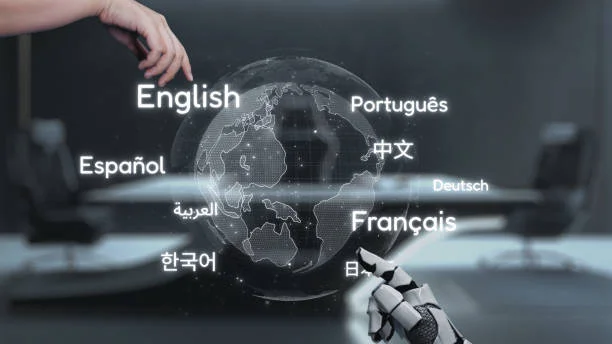I. Introduction
The ongoing debate between AI and human translation is still shaping the language sector. Companies aim to satisfy requests from throughout the world quickly, but they still need the cultural accuracy and awareness that only a human touch can offer. Even though Google Translate and other machine translation systems provide blazingly quick results, they frequently miss context, subtleties, or tone. This is where hybrid translation comes into play, a novel approach that combines the precision of human expertise with the speed of artificial intelligence. Particularly in fields where tone, voice, and intent are crucial, this potent combination produces translations that are scalable and trustworthy. Hybrid translation provides a quick fix without compromising quality, whether you’re translating a product description or a brand message.
Knowledge is just a click away—come explore more with us online.
From Manual to Machine: The Path to Hybrid Translation
Word-by-word translation by human linguists marked the beginning of the hybrid translation process. Although these qualified translators produced excellent results, they found it challenging to meet the increasing requests for information around the world. Then the machine translation age arrived. The industry was transformed by tools like Google Translate and DeepL, which let users translate vast amounts of text rapidly. This invention increased speed, but it was unreliable, particularly in delicate or high-stakes situations. Nowadays, many companies choose a more well-rounded approach, which combines AI and human editing. This method combines the speed of robots with the cultural awareness of human translators, giving you the best of both worlds. More than just a professional translation service online, hybrid models represent a significant leap in how we think about global communication.
What is Hybrid Translation?
Hybrid translation is a modern methodology that starts with machines and finishes with humans, designed to scale without compromising meaning or tone.
How Hybrid Translation Works
- AI Produces the First Draft
Artificial intelligence tools swiftly analyze the original material and provide a translation that is both grammatically and structurally sound. This procedure significantly decreases turnaround time.
- The Role of Human Linguists
The AI-generated document is then examined and edited by qualified experts who correct errors, add context, and account for tone and cultural quirks.
- The Final Product is Examined for Quality
The text is put through one last quality check before distribution to make sure it conveys the desired meaning rather than just the translation.
This approach is perfect for product descriptions, user manuals, websites, marketing campaigns, and more. By letting machines handle the labor-intensive tasks and allowing humans to add subtleties, it combines the best aspects of AI vs human translation, making them the ideal combination for producing large quantities of information that is ready for a worldwide audience.
Where AI Falls Short: The Case for Human Involvement
Even with AI advancements, there are still some basic linguistic problems that technology cannot solve. Arguments between AI and human translation frequently center on these topics:
- Idiomatic Expressions and Jokes
Usually, idioms or jokes are mistranslated by machines, making them seem strange or even absurd.
- Context and Cultural Sensitivity
The emotional tone or cultural subtext that is ingrained in language can only be entirely understood by a human translator.
- Knowledge Particular to the Industry
Technical, legal, and medical publications frequently call for subject-matter knowledge that computers cannot replicate.
- Consistency in Brand Voice
The brand personality may be missed by AI, even if it gets the words right. Every line can be made to sound like you by a human.
Therefore, even if AI can speed up the process, human involvement is necessary to produce material that is understandable, pertinent, and culturally suitable.
Why Hybrid Translation Beats AI Alone
Beyond speed, there are real benefits to combining AI with human expertise. The hybrid approach is revolutionizing international communication for the following reasons, particularly when using a professional translation service online:
- Quicker Delivery Without Sacrificing Quality
AI completes tasks quickly. People check to make sure it’s correct. This combination reduces lead time without compromising quality.
- Human-Level Accuracy and Compassion
It is difficult to mimic emotion, humor, and intention; these layers are brought to life by human editors.
- Scalable Quality for Worldwide Development
Hybrid workflows can handle translations of 10,000 product descriptions or just ten.
- Economic in Contrast to Conventional Agencies
Hybrid translation reduces overall expenses by minimizing human labor in the initial phases.
- Versatile in Different Use Cases
Hybrid models are applicable to a range of platforms and industries, from business software to e-commerce.
Where Hybrid Translation Shines
Hybrid translation works particularly well for the following kinds of content:
- Marketing and Advertising Copy
AI by itself cannot provide copy messaging that is both compelling and culturally relevant.
- Localization of Apps and User Interfaces
Short, unambiguous, and cross-language user interface strings are essential.
- Product Descriptions for E-Commerce
In addition to speed, high-volume content must convert. Here, a hybrid is ideal.
- Texts Pertaining to Law or Regulations
These call for precise wording and language that is sensitive to context. For AI to function correctly, human monitoring is required.
Quality and efficiency are guaranteed when you use a professional translation service online that uses hybrid principles, whether you’re handling a product launch or localizing your entire platform.
Choosing the Right Hybrid Translation Partner
Price and speed aren’t the only considerations when choosing a hybrid translation service. Seek out a partner who will take good care of your content. Here are a few things to think about:
- Actual Human Editing
Make sure that people actively shape tone and meaning rather than just checking for spelling errors.
- Fast Turnaround for Minor Tasks
Both mass and bite-sized content can be handled rapidly by a good service.
- Clear Pricing and Adaptability
Ask whether they provide custom packages or volume discounts to avoid any unexpected costs.
- Completely Web-Based Platform
With only a few clicks, you may get quotations, uploads, and revisions from the top professional translation service online.
Regardless of the language, selecting the correct team guarantees that your message is not lost in translation.
Conclusion & Call to Action
In the context of AI vs. human translation, hybrid translation is a clever advancement rather than merely a compromise. It combines the invaluable insight of human expertise with the best that technology has to offer. Hybrid translation provides the balance that contemporary organizations want, whether you’re updating a multilingual website or entering new markets. Hybrid translation is your best bet for success on a worldwide scale if you’re looking for a quick, dependable, and scalable solution that blends human nuance with machine efficiency.
Before you head out, don’t forget to check out some of our other great reads!






